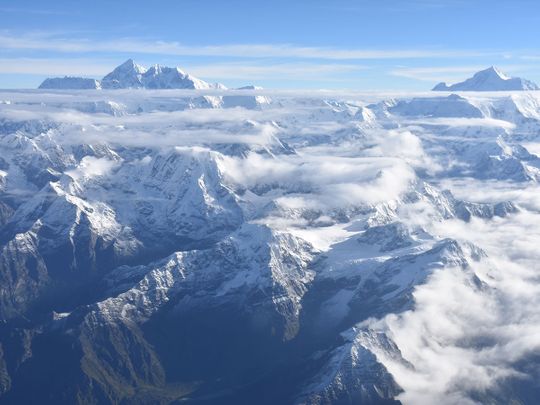
What will happen when the roof of the world – the Himalayas – begins to melt?
Click start to play today’s Word Search, where you can find a number of natural features.
One of the words mentioned in today’s puzzle is “moraine”. Think of a glacier, a massive, icy bulldozer, slowly carving a path down a mountainside and leaving a ridge of debris on either side as it lumbers forward. The ridges are called moraines, and as glaciers melt and retreat, they leave behind water that fills the deep cavity that remains, making moraines Nature’s very own dams.
Unfortunately, the Himalaya, which has long been the resting place of giant glaciers, is quickly becoming a mountain range full of lakes. In a comprehensive study published in a 2019 book called The Hindu Kush Himalaya Assessment, the Nepal-based International Centre for Integrated Mountain Development warned that done-third to two-thirds of the region’s 56,000 glaciers will disappear by 2100, depening on the rate of global warming.
The immediate concern is – when the glaciers melt, where will the estimated quadrillion gallons of water go?
As the lakes fill up, the water can spill over the moraines holding the glacial water in place, or even destroy the moraines. According to a November 2019 report in the National Geographic, scientists call such events glacial lake outburst floods (GLOF), but there is also a Sherpa word for it – chhu-gyumha or catastrophic flood.
This happened in August 1985 in the Himalayas, when an ice avalanche rumbled down the Langmoche Glacier and crashed into the pear-shaped Dig Lake. When the avalanche hit, it created a wave 13 to 20 feet high that breached the moraine and displaced over 1.3 billion gallons of water downstream – about the volume of 2,000 Olympic-sized swimming pools. It destroyed 14 bridges, 30 houses and a hydroelectric plant. The waves reportedly came like a giant black mass of water slowly bearing down on the valley, and sounded like hundreds of helicopters, with a strong smell of soil or wet earth.
Currently, 42 lakes in Nepal are listed as being at very high risk of flooding, and across the Greater Himalaya region, the number is well over 100. Scientists in the region are rushing to come up with solutions to protect the country in the event of future floods.
What do you think of the looming disaster in the Himalayas? Play today’s Word Search and let us know at games@gulfnews.com.



